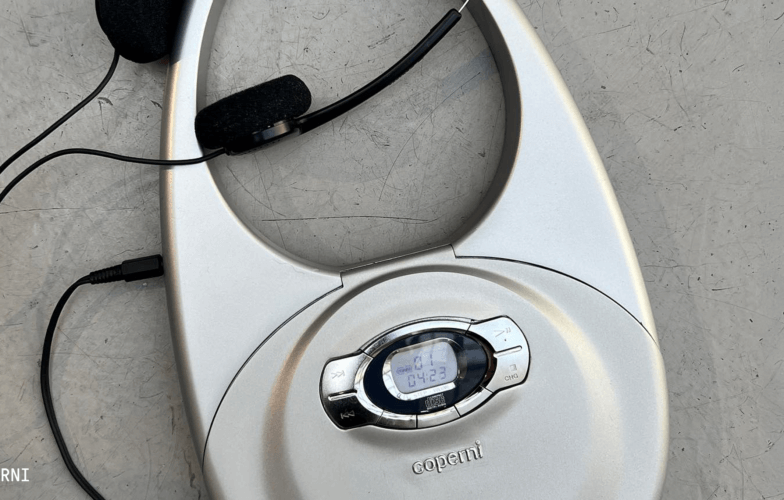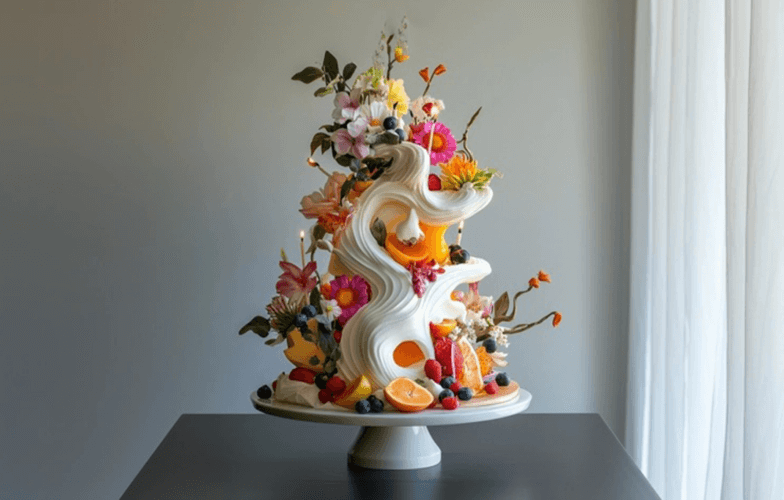
Hot brands: What factors make a brand successful?
InterviewsLevi’s stock rose by 20% in a single day after the release of Beyoncé’s “Levii’s Jeans” song; after years of rapid growth and almost constant buzz, Gucci lost its hype, and sales have since fallen below the symbolic $10 billion mark; 600,000 customers are on the waiting list for the brand new Rhode brand’s (launched by Hailey Bieber) lip balm integrated into a smartphone case; and Balenciaga had to lay low for a year with serious reinvention efforts after a single bad buzz.
It’s a crazy time for brands, who must constantly reinvent themselves to maintain their “hotness.” In anticipation of our “Hot Brands: The Recipe” conference at the Centre Pompidou, Emmanuel Pradère, President of the Experienced Capital investment fund, explains what makes brands desirable and successful.
Could you please introduce yourself and tell us about the link between your profession and brands?
Emmanuel Pradère: Experienced Capital is a growth capital fund dedicated to supporting premium brands in all consumer sectors (fashion, accessories, beauty, wellness, furniture, home decor, catering, experiential leisure, sports, etc.). Over the years, our team has developed specific expertise in these sectors, and we believe we have a certain know-how in helping brands grow and establish themselves sustainably. Jimmy Fairly and Sœur are two examples of brands we have helped and who have been able to do just that.
The common denominator among all the brands we support is that they put customers first; and those customers are always the same: socio-professional, urban, connected and searching for meaning. We also call them “ECP customers,” and after years of working with them, we know them perfectly well. So our profession, growth capital, is supporting young, emerging brands by helping them to grow, position themselves and become established in the competitive landscape. Our role is to be their first accelerator.
Voir cette publication sur Instagram
What is a brand’s purpose?
E.P.: If we stick to the strict definition, a brand is “a sign that allows a consumer to distinguish a product or service.” But going further, the brand and the brand universe are what create the strongest possible attachment with the customer and develop mental projections that go far beyond the product or service. This is the difference between a brand and a store.
So we buy “a pair of Jimmys” at Jimmy Fairly instead of a pair of sunglasses at Générale d’Optique, we “do a BAM with the office” instead of singing karaoke with the office or even “have a Dynamo session with Stéphane (the coach)” rather than have a collective intensive cycling session at the gym. In these examples, the mere mention of the brand projects us into a universe and a community.
Voir cette publication sur Instagram
So brand performance is twofold: distinguishing the product or service, making it aspirational and uniting a community (also found on social networks); and representing values or conveying meaning, as the case may be. In a world of overconsumption, the brand stands as a refuge, a reassurance.
What are the three main ingredients of a hot brand today?
E.P.: Above all, the product must be right, of good quality, and offered at the right price. Jimmy Fairly glasses, for example, are perfect from this point of view.
Next, the brand must be able to invite the customer into a universe and offer them content (beyond the product) that is sophisticated enough to help them become involved, but still universal enough to address the widest possible audience. Again, Jimmy Fairly is a good example: beyond the product offer (just-right design and materials), the store concept and way of addressing the customer are totally in line with new trends and completely overshadow traditional opticians.
Voir cette publication sur Instagram
Finally, there needs to be a spark, a kind of collective madness instilled by the team, which achieves notoriety beyond traditional marketing channels and creates buzz around the brand. Again, taking the example of Jimmy, it’s the cashierless store with ultra-motivated sales teams and the long-term “buy one give one” partnership that has existed since the beginning but is not part of the marketing pitch. You discover it (or not) after the sale. Still, that’s over 1 million pairs given away!
To conclude, one day I was in a Jimmy Fairly store and a 30-year-old woman (an “ECP customer”) came in with two friends to show them the store and the collections. She was so enthusiastic, she was doing the salesperson’s job – who therefore had time to take care of other customers – and the three friends were having a fun time, trying on glasses themselves and laughing, and they bought four pairs in total. We were far from the customer experience you have at Afflelou or Optic 2000. You don’t achieve that just by adding a coffee machine to your store.
How do you measure a brand’s “hotness”? What are the indicators?
E.P.: When you’re able to rally an engaged community around your brand, it means the brand is hot. The fact that some customers act as ambassadors, in the physical world or on social networks, is a good indicator. On social networks, this is especially measured through the engagement rate.
What does it take for a brand to stay hot for a long time?
E.P.:A brand must stay true to itself while constantly micro-evolving to continually surprise its customers. It’s especially important to always watch what the competitors are doing, in the domestic market and abroad. That includes the countries where the brand is not yet present, to ensure it doesn’t become outdated. Brands must never rest on their laurels!
What would you say is an example of a super-hot brand? What does it do better than others?
E.P.: I’ve mentioned Jimmy Fairly several times, but I’ll continue (the brand is no longer in our portfolio, so we have nothing to sell!). In fact, it’s the super-hot brand in eyewear, offering customers a beautiful pair of prescription or sunglasses with perfect design and finishes, three times cheaper than its competitors, in Apple-like stores with cool, competent salespeople. They never talk to you about your health insurance before you’ve chosen the product, so it’s truly a pleasure purchase. Everything in the store is just right: the products, design elements (even the books and plants) and prices, but also the teams and even the customers, in the sense that you could be with the same people at a friend’s party, a sign that the brand has successfully rallied a community.
On 4 June, the NellyRodi teams invite you to the Centre Pompidou for an exclusive preview of the results of their latest research on the success factors of brands and the levers for creating long-term value. Click here to book your seat!
Voir cette publication sur Instagram
Voir cette publication sur Instagram



